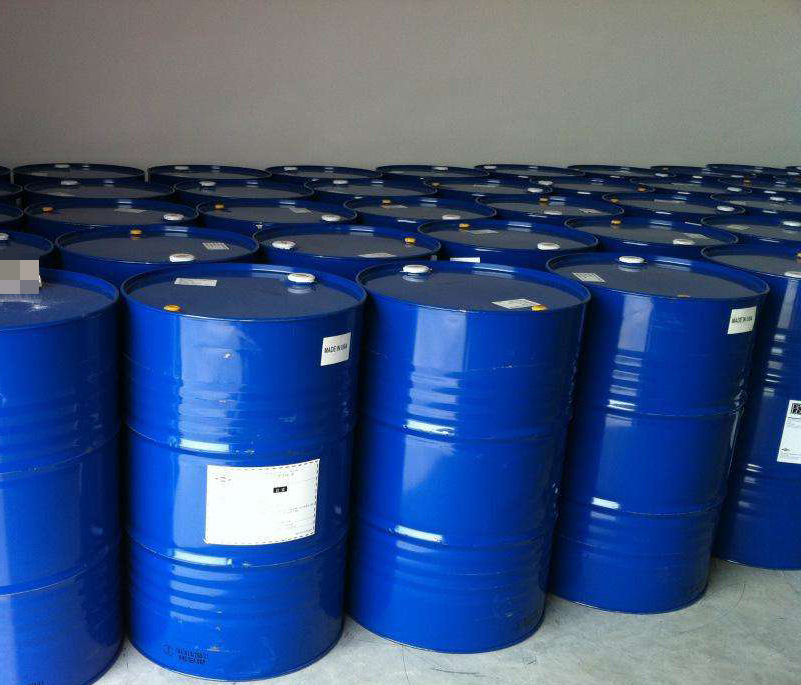Product name |
Type |
Sealer |
Viscosity (mPa.s/25) |
Solid content (%) |
Solvent |
Application |
BI 7960 |
HDI Biuret |
DMP |
1100 |
70 |
PM |
Coil steel/electroplating coating |
BI 7961 |
HDI Biuret |
DMP |
2250 |
70 |
Naphta B |
Coil steel/electroplating coating |
BI 7963 |
HDI Biuret |
DEM |
4500 |
70 |
PM |
Low temperature curing or highly reactive coatings |
BI 7981 |
HDI trimer |
450 |
65 |
PMA |
Automotive/coil coating |
|
BI 7982 |
HDI trimer |
DMP |
600 |
70 |
PM |
Automotive/coil coating |
BI 7984 |
HDI trimer |
MEKO |
3000 |
75 |
Naphta B |
Coil/Industrial/Glass Coatings |
BI 7991 |
HDI Biuret |
DMP/DEM |
1000 |
70 |
PM |
Automotive/coil coating |
BI 7992 |
HDI trimer |
DMP/DEM |
1500 |
70 |
PM |
Automotive/coil coating |
DP9B/1353 |
HDI trimer |
DMP |
4000 |
75 |
Shellsol A/PMA |
Can/coil coating |
BI 7950 |
IPDI adduct |
DMP |
1200 |
65 |
PM |
Automotive/coil coating |
BI 7951 |
IPDI trimer |
DMP |
3500 |
65 |
Naphta B/BA |
Automotive/coil coating |
Category: PU Technology
PU Technology
Costron (formerly Bayer) Desmodur 44C Pure MDI 101-68-8
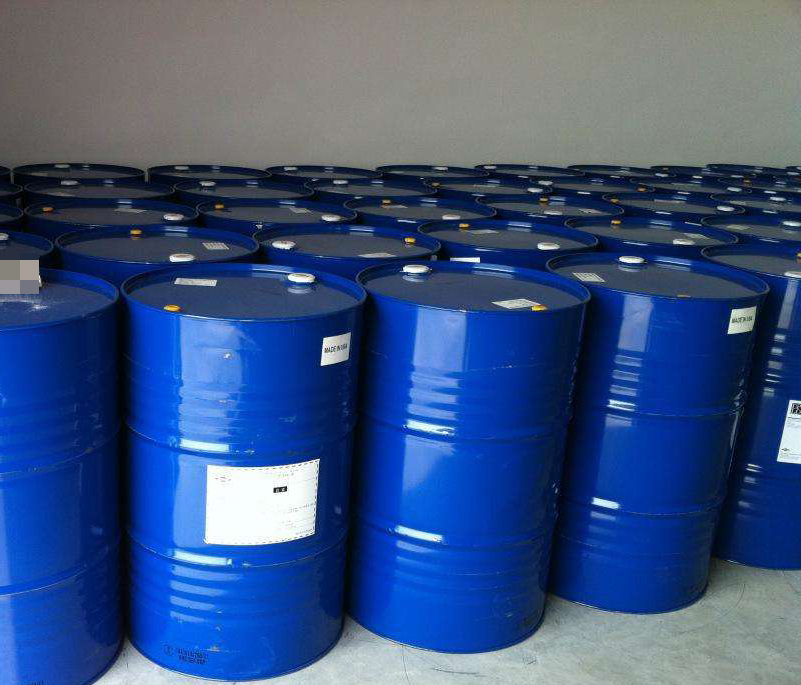
Product Description
DESMODUR 44C is a 4,4′-diphenylmethane diisocyanate monomer with a molecular weight of 250 and is a colorless to light yellow solid at room temperature. This product is mainly used in the production of polyurethane products.
Sampling
Prevent the product from coming into contact with water vapor during sampling.
Specification
Item
Indicator
Unit
Test Method
2,4′-MDI content
≤1.8
% of
20110367601-92
Hydrolyzed chloride content
≤50
ppm
2011-0339304-95
Dimer content*
≤0.1
% of
2012-0346901-92
Typical properties
Item
Indicator
Unit
Test method
Purity (molecular weight 250)
≥99.5
% of
2011-0248603-94
NCO content (theoretical value)
33.6
% of NCO content (theoretical value)
–
Phenyl isocyanate content
≤10
ppm
2011-0339304-95
Viscosity (40℃)
0.1
mPa.s
2011-0313703-95
Density (40℃)
1.19
g/cm³
DIN 51757
Specific heat (cp)
Approx. 1.39
kJ/kg.K
Heat of dissolution
Approx. 102
J/g
Packaging
DESMODUR 44C is available in two ways:
– Liquid (tanker truck)
– Solid (in drums, net weight 225 kg)
Storage
Recommended storage temperature (°C)
<5 (solid), 43±2 (liquid)
Shelf life
≤3 months (solid), ≤3 weeks in tank (liquid) if kept in closed, drained condition
Handling Recommendations
Like all isocyanates, DESMODUR 44C is very sensitive to water and reacts with water to produce insoluble urea and carbon dioxide. In a closed container, the carbon dioxide produced can cause a dangerous rise in container pressure.
Exposure of DESMODUR 44C to air, especially sunlight, accelerates yellowing. It is therefore recommended that liquid DESMODUR 44C be stored in a dry nitrogen atmosphere. yellowing will not normally affect the processability of the product.
DESMODUR 44C is heat sensitive and can form dimers. DESMODUR 44C in the solid state is more susceptible to dimerization at room temperature than in the liquid state at 45°C. For this reason, it is important to store DESMODUR 44C in the solid state at room temperature. Therefore, solid products should be stored below 5°C and melted gradually and rapidly before use. Although the rate of dimerization of the product decreases with decreasing temperature, the stability is still limited even at temperatures below 5℃.
Solid DESMODUR 44C needs to be heated to ≥70°C for melting, a process that will increase the formation of insoluble dimers and possibly deform the drum due to increased pressure at increased temperatures.
Evonik Vestanat IPDI isophorone diisocyanate 4098-71-9
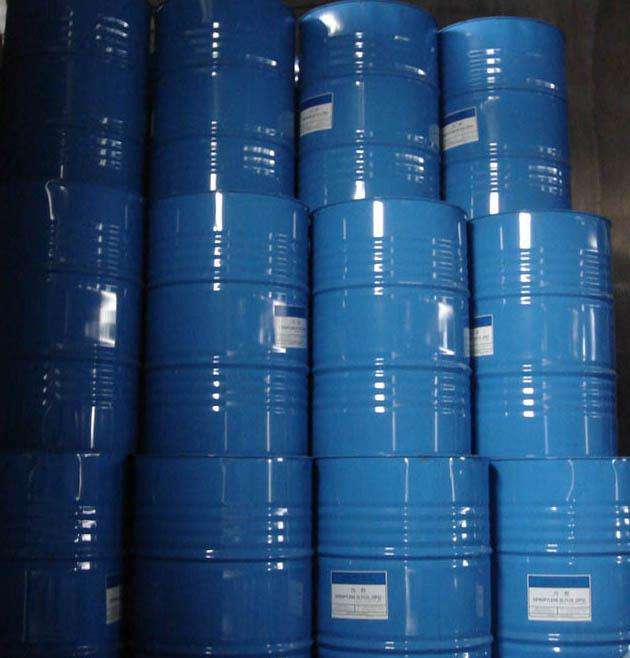
Manufacturer :EVONIK Degussa
Structure: 3-isocyanatomethyl-3,5,5-trimethylcyclohexyl isocyanate
Physical properties
Properties
Numerical value
Unit
Test method
Density (20℃)
1.058-1.064
g/cm3
DIN51757ASTMD2111
Viscosity (23℃)
13-15
mPa-s
DINENISO3219
Color (APHA)
<30
–
DIN/ISO6271
Refractive index (N25D)
1.483
–
DIN51423 Part II
Vapor pressure (50°C)
Approx. 0.02
hPa
–
Flash point (closed cup)
155
flash point (closed cup) 155 ºC
DIN51758
Flash Point
430
Ignition point 430 ºC
DIN51794
Specification
Properties
Numerical value
Unit
Test Method
NCO content
37.5-37.8
%Weight
ENISO11909ASTMD2572
Purity
>99.5
%Weight
Gas Chromatography
Total Chlorine
<400
ppm
–
Hydrolyzed Chlorine
<200 ppm
ppm
–
Evonik IPDI Properties and Applications
The alicyclic diisocyanate VESTANAT®IPDI meets all the necessary conditions for the production of light-stable and weather-resistant polyurethanes. The selection of the appropriate co-reactants (polyols) gives the polyamino acid system a high degree of resistance to yellowing and properties typical of polyurethanes, such as good mechanical and chemical resistance. In addition, IPDI has many advantages in the polyurethane process due to its inherent properties.
Since VESTANAT®IPDI contains two different isocyanate functional groups, it presents selectivity in ammonia esterification reactions, e.g. in the synthesis of pre-polymers, resulting in good reproducibility. The selective formation of the desired product narrows the molecular weight distribution, reduces the viscosity and also reduces the residual concentration of the starting monomer diisocyanate (IPDI). As a raw material for polyurethanes, IPDI and its polyisocyanates and prepolymers are known for their excellent miscibility with other resins and good solubility in a variety of general-purpose solvents such as ketones, esters, ethers, and aromatics. Good solubility and miscibility in aliphatic hydrocarbons such as petroleum solvents is also exceptional.
From a technical point of view, VESTANAT® IPDI is an important starting isocyanate for the production of raw materials for polyurethane paints. It is used in various polyurethane paint systems in different forms. Other important uses are solvent-free, light-stabilized polyurethane injection molding technology (RIM) and water-based adhesives or hot melt glues. In polyurethane resin technology, the preparation of waterborne polyurethane dispersions is the most important application of VESTANAT®IPDI, since low viscosity prepolymers and end products with low co-solvent content can be produced from this starting material. It is a hard segment component of the resin. Polyurethane acrylates synthesized on the basis of VESTANAT®IPDI for radiation curing (conventional or aqueous) can be chosen if excellent yellowing resistance and low reactive diluent or co-solvent content are required.
VESTANAT®IPDI can be used in moisture-curing prepolymers, another application for polyurethane resins, and IPDI can characterize these products with resistance to yellowing, low viscosity and low diisohydrogenate monomer residues. Solvent-borne, high-molecular-weight polyurethane resins based on VESTANAT® IPDI can be used in coatings where abrasion resistance is required, especially where long-term flexibility and light resistance are required. Typical applications are polyurethane resins for artificial leather or natural leather finishes. The polyurethanatization of alkyd resins with IPDI to produce ammonia ester alkyds and ammonia ester oils is mainly used to sufficiently improve the yellowing resistance, drying properties and hardness of these resins.
In the two-component polyurethane sector, VESTANAT® IPDI is used either as an adduct with tertiary alcohols (e.g. adducts with TMP) or in the form of polyisocyanates (e.g. VESTANAT® T1890). This application is mainly used in large vehicle and automotive coatings (OEM and refinish).
VESTANAT®IPDI and its polyisocyanates are used to prepare closed polyisocyanates that can be used as crosslinkers in electrostatically sprayed powder coatings and solvent-borne industrial paints, especially for can coating and coil coating. IPDI-based crosslinkers give solvent-free two-component polyurethanes good light stability and mechanical properties. These systems are mainly used for elastomeric coatings and casting resins. Hard systems can be used as industrial materials.
Reactive and Catalytic
Aliphatic and alicyclic diisocyanates are less reactive than aromatic ones.IPDI usually requires a suitable catalyst to accelerate the ammonia esterification reaction. Dibutyltin dilaurate is recommended as a catalyst for ammonia esterification.
Dibutyltin dilaurate is often used when VESTANAT® IPDI or adducts of this product are used as ambient temperature crosslinkers in polyurethane formulations. Where a complete or partial reaction of isocyanate and water (moisture) is required, a catalyst mixture of dibutyltin dilaurate and a tertiary amine such as diazodicarbocyclooctane (DABCO) should be used. In addition to dibutyltin dilaurate, iron acetylacetonate, phenylmercury salt (COSCATR83) is an effective catalyst for solvent-free polyurethanes (elastomers and casting resins). Of course at high temperatures, resin synthesis, i.e. production of prepolymers, is possible without a catalyst for the reaction. When the temperature is increased, the difference between the two isocyanate activities of IPDI decreases, so that the production of prepolymers is more selective when a catalyst is employed at room temperature. The best selectivity can be achieved at temperatures up to 50°C and with the addition of DBTDL.
Storage and transportation
VESTANAT® IPDI is supplied in non-recyclable 30 kg cans and 200 kg drums, but also in tankers and storage tanks. If moisture can be removed, IPDI can be stored for at least one year without affecting the quality of the above standards. Long-term storage may increase the color index.
Crestron (formerly Bayer) Desmodur I Isophorone Diisocyanate IPDI 4098-71-9
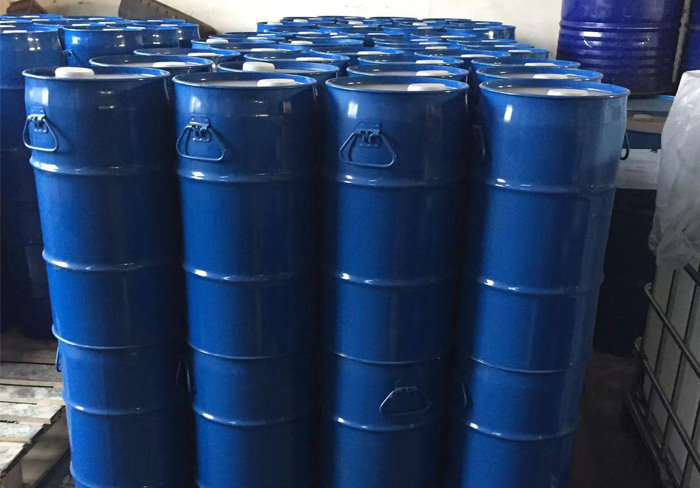
Chemical name : 3-Isocyanatomethyl-3,5,5-trimethylcyclohexyl isocyanate
Alias : 3-Isocyanatomethyl-3,5,5-trimethylcyclohexyl isocyanate; 5-Isocyanato-1-(isocyanatomethyl)-1,3,3-trimethylcyclohexane; IPDI
IPDI products are mixtures containing 75% cis and 25% trans isomers.
Molecular Formula
C12H18N2O2
Relative Molecular Mass
222.29.CAS
CAS No.
4098-71-9.
EINECS No.
223-861-6
Physical and Chemical Properties
Isophorone Diisocyanate IPDI is colorless or light yellow liquid with camphor-like odor, completely miscible with esters, ketones, ethers, aromatic hydrocarbons and aliphatic hydrocarbons and other organic solvents.
Density
1.056
Melting point
– 60°C
Boiling point
158°C (15 mmHg)
Refractive index
1.484
Flash Point
>110°C
Water Solubility
<0.1 g/100 mL at 25°C
Performance Indicators
The specifications for IPDI products (brand name Desmodur I) are:
Purity
≥99.5 %
Mass fraction of NCO
≥37.5%
Color (Hazen)
≤30
Hydrolyzed chlorine
≤200 mg/kg
Total chlorine
≤400 mg/kg
Viscosity (25℃)
Approx. 10 mPa-s.
Safety data
Hazardous material symbol
T;N
Hazardous category code
r22;r36/37/38;r42/43;r51/53
Safety instructions
s26;s28;s38;s45;s61
Dangerous Goods Transportation Number
UN 2290/2906
Properties and Uses
IPDI is an aliphatic isocyanate, isophorone diisocyanate IPDI is also a kind of cycloaliphatic isocyanate, isophorone diisocyanate IPDI reactivity is lower than the aromatic isocyanate, and the vapor pressure is also lower. The reactivity of 2 NCO groups in isophorone diisocyanate IPDI molecule is different, because the primary NCO in IPDI molecule is hindered by the cyclohexane ring and a-substituted methyl group, which makes the reactivity of the secondary NCO group connected to cyclohexane is 1.3-2.5 times higher than that of the primary NCO; the reactivity of IPDI and hydroxyl group is 4-5 times faster than that of HDI and hydroxyl group.
The polyurethane resin made of isophorone diisocyanate IPDI has excellent light stability and chemical resistance, isophorone diisocyanate IPDI is generally used in the manufacture of high-grade polyurethane resins, such as light-resistant and marble-resistant polyurethane coatings, abrasion-resistant and hydrolysis-resistant polyurethane elastomers, and isophorone diisocyanate IPDI is also used in the manufacture of non-yellowing microcellular polyurethane foam.
Lanxess Lanxess Trixene DP9C/290 HDI trimer water-based closed crosslinker
Water-based Blocked cross-linking agent
Product name |
Type |
Sealer |
Ion type |
PH |
Solid content (%) |
Thinner |
BI 200 |
HDI trimer |
DMP |
Anions |
7-8 |
40 |
NMP |
BI 201 |
HDI trimer |
DMP |
Anions |
7-9 |
40 |
DME |
BI 220 |
HDI trimer |
DMP |
Non-ionic |
5-8 |
40 |
DIBA |
DP9C/213 |
HDI trimer |
Caprolactam |
Anions |
7-9 |
40 |
DME |
DP9C/235 |
HDI trimer |
MEKO |
Anions |
5-8 |
41.5 |
DIBA |
DP9C/290 |
HDI trimer |
DMP |
cation |
4-5 |
40 |
DME |
DP9C/323 |
HDI&IPDI trimer |
DMP |
Non-ionic |
5-8 |
40 |
DME |
DP9C/347 |
HDI Biuret |
DMP |
Non-ionic |
5-8 |
40 |
DIBA |
Lanxess Lanxess Trixene DP9C/235 HDI trimer water-based closed cross-linking agent
Water-based Blocked cross-linking agent
Product name |
Type |
Sealer |
Ion type |
PH |
Solid content (%) |
Thinner |
BI 200 |
HDI trimer |
DMP |
Anions |
7-8 |
40 |
NMP |
BI 201 |
HDI trimer |
DMP |
Anions |
7-9 |
40 |
DME |
BI 220 |
HDI trimer |
DMP |
Non-ionic |
5-8 |
40 |
DIBA |
DP9C/213 |
HDI trimer |
Caprolactam |
Anions |
7-9 |
40 |
DME |
DP9C/235 |
HDI trimer |
MEKO |
Anions |
5-8 |
41.5 |
DIBA |
DP9C/290 |
HDI trimer |
DMP |
cation |
4-5 |
40 |
DME |
DP9C/323 |
HDI&IPDI trimer |
DMP |
Non-ionic |
5-8 |
40 |
DME |
DP9C/347 |
HDI Biuret |
DMP |
Non-ionic |
5-8 |
40 |
DIBA |
PU-655 HDI hydrophilic aliphatic polyisocyanate
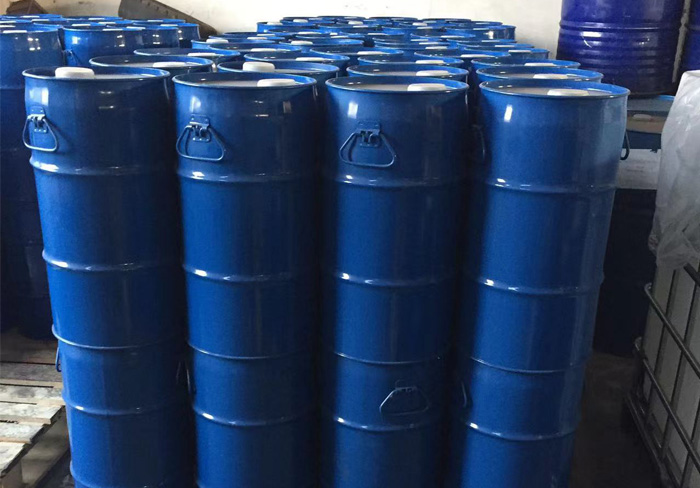
PU-655 HDI hydrophilic aliphatic polyisocyanate Curing agent component for aqueous two-component polyurethane systems
A-A+
Model No. PU-655
Type Hydrophilic aliphatic polyisocyanate based on hexamethylene diisocyanate (HDI)
Curing agent component for aqueous two-component polyurethane systems
Description of PU-655
PU-655 is a crosslinking agent for aqueous systems, which require good binding stability and chemical resistance.
Uses
Due to the balance between moderate hydrophilicity and high functionality, waterborne two-component polyurethane coatings prepared with PU-655 are characterized by fast drying and curing, high final hardness, and excellent chemical resistance.PU-655 is also used as a cross-linking additive for aqueous polyols and most neutral aqueous polymer dispersions (e.g., polyurethanes, polyvinyl acetates, polyacrylates, and synthetic polymers). PU-655 can also be used as a crosslinking additive in most neutral aqueous polymer dispersions such as polyurethanes, polyvinyl acetates, polyacrylates and synthetic rubber dispersions.
Product Specification
Properties
Numerical value
NCO content (%)
20.3-21.3
Viscosity (23℃, mPa.s)
3500±1000
Hazen color value
<60
HDI monomer content (%)
<0.1
Density (g/cm³)
Approx. 1.16
Flash point (℃)
Approx. 192
Storage
Store in airtight containers
Recommended storage temperature: 0-30 °C.
Protection against moisture, heat and foreign substances
General information: Hydrophilic isocyanates are very sensitive to moisture and react with water to form
carbon dioxide and water-insoluble urea. Therefore, they must be stored in airtight containers. All forms of water (humid air, solvents, wet containers)
must be prevented because the production of carbon dioxide can lead to a dangerous increase in pressure. Storage at high temperatures causes a slight increase in viscosity and color.
Material Safety
The material safety data sheet for this product is available on request.
HF-1568 Aliphatic polyisocyanates (HDI trimers)
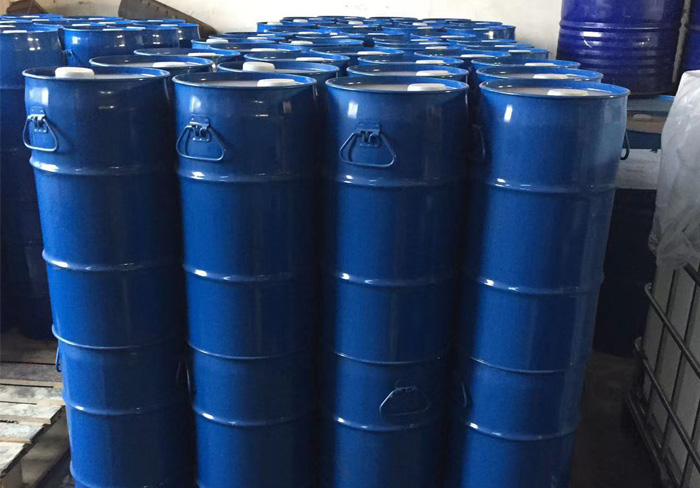
HF-1568 Aliphatic polyisocyanate (HDI trimer) Used for automotive OEM paints, automotive refinishing, transportation, industrial products, and plastics.
Model HF-1568
Type Aliphatic polyisocyanate (HDI trimer)
Application Used as a curing agent component in light-resistant polyurethane coatings. Used in automotive original paint, automotive refinishing, transportation, industrial products and plastic finishing.
Main Characteristics
-Excellent chemical and weathering resistance;
-Outstanding light retention and excellent mechanical properties.
Product Specification
Properties
Numerical value
Non-volatile component (%)
68±1
NCO content (%)
15
Flash point (℃)
About 50
Color value
≤40
Viscosity (25℃, mPa.s)
About 500
HDI monomer (%)
≤0.15
Recommendations for use
With polyacrylate or polyester polyol, the coating system configured is suitable for self-drying or baking.
Storage
Sensitive to moisture and should therefore be stored in the original airtight containers. The product has a shelf life of at least 6 months when stored under proper conditions at room temperature.
Material Safety
Material Safety Data Sheets for this product are available on request.
HF-3550 Low Temperature Unsealing Single Component HDI Isocyanate Curing Agent
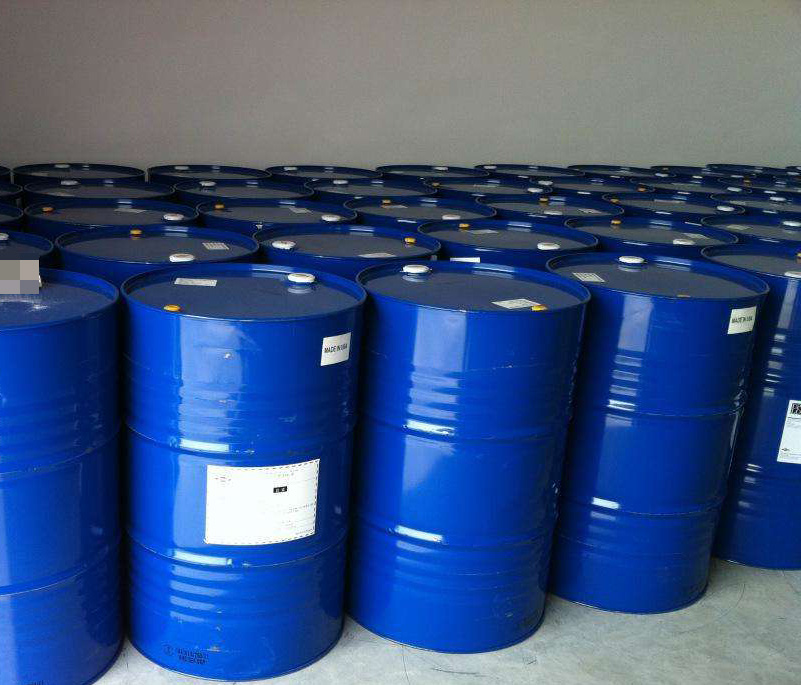
Model HF-3550
Type Low-temperature unsealing one-component HDI isocyanate curing agent
Applications Various types of polyurethane type one-component baking type coatings, inks, adhesives.
Main Characteristics
-110℃ low temperature unsealing, high temperature fast curing;
-Good compatibility with various types of resins to improve water resistance, flexibility, chemical resistance and adhesion of paint film;
-High storage stability at room temperature.
Product specification
Properties
Numerical value
Non-volatile component (%)
70±1
Appearance
Clear transparent liquid
Viscosity (25℃, mPa.s)
1000-1500
NCO content (%)
10.0±1
Solvent
PM
Specific gravity
1.0-1.1
Storage
It should be stored at 5°C to 30°C in a dry indoor place away from direct sunlight. Under the specified storage conditions, the expected shelf life of this product is 360 days.
Material Safety
Material Safety Data Sheets for this product are available upon request.
HF-4416 Low Temperature Unsealing Single Component HDI Isocyanate Curing Agent
